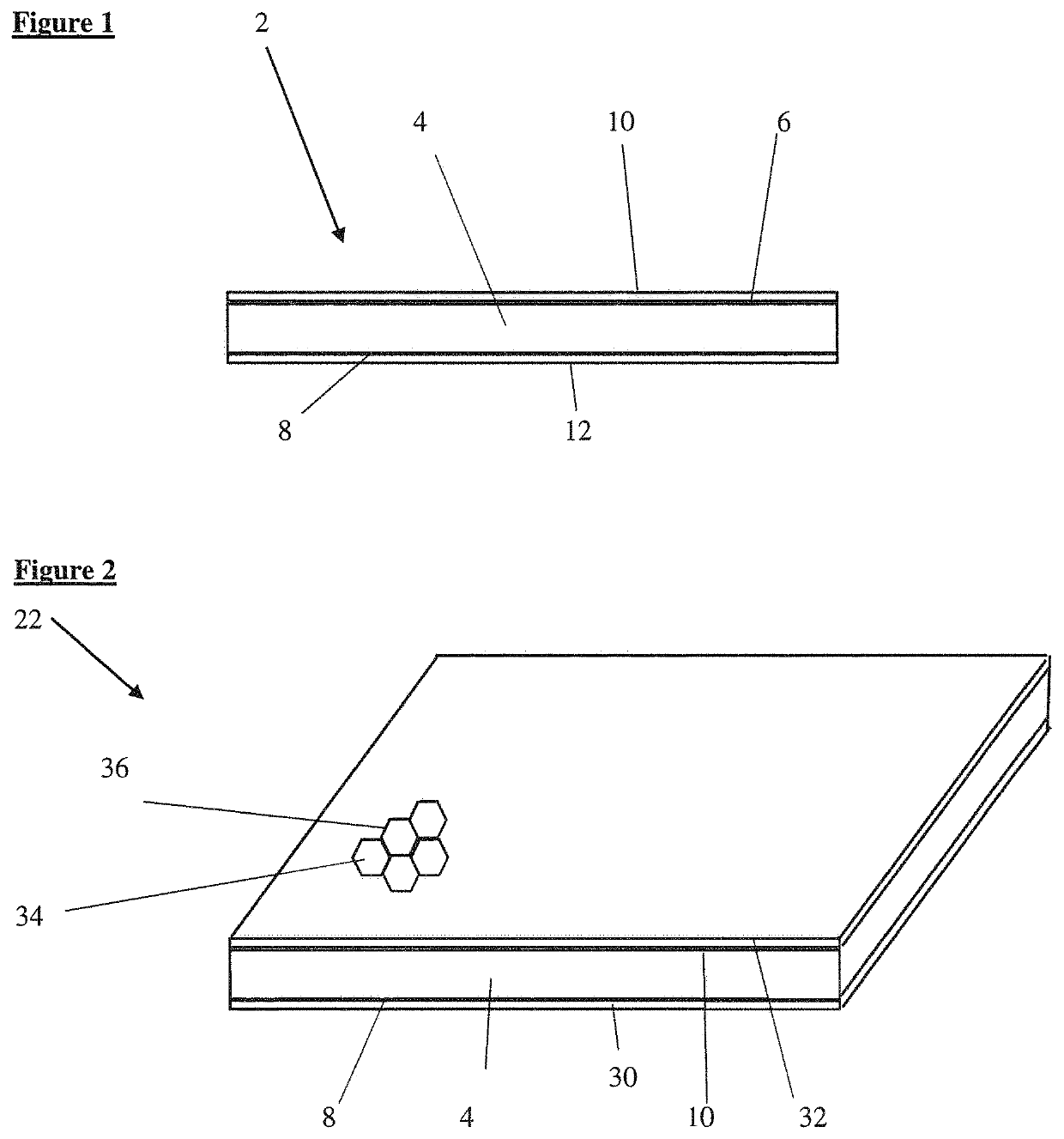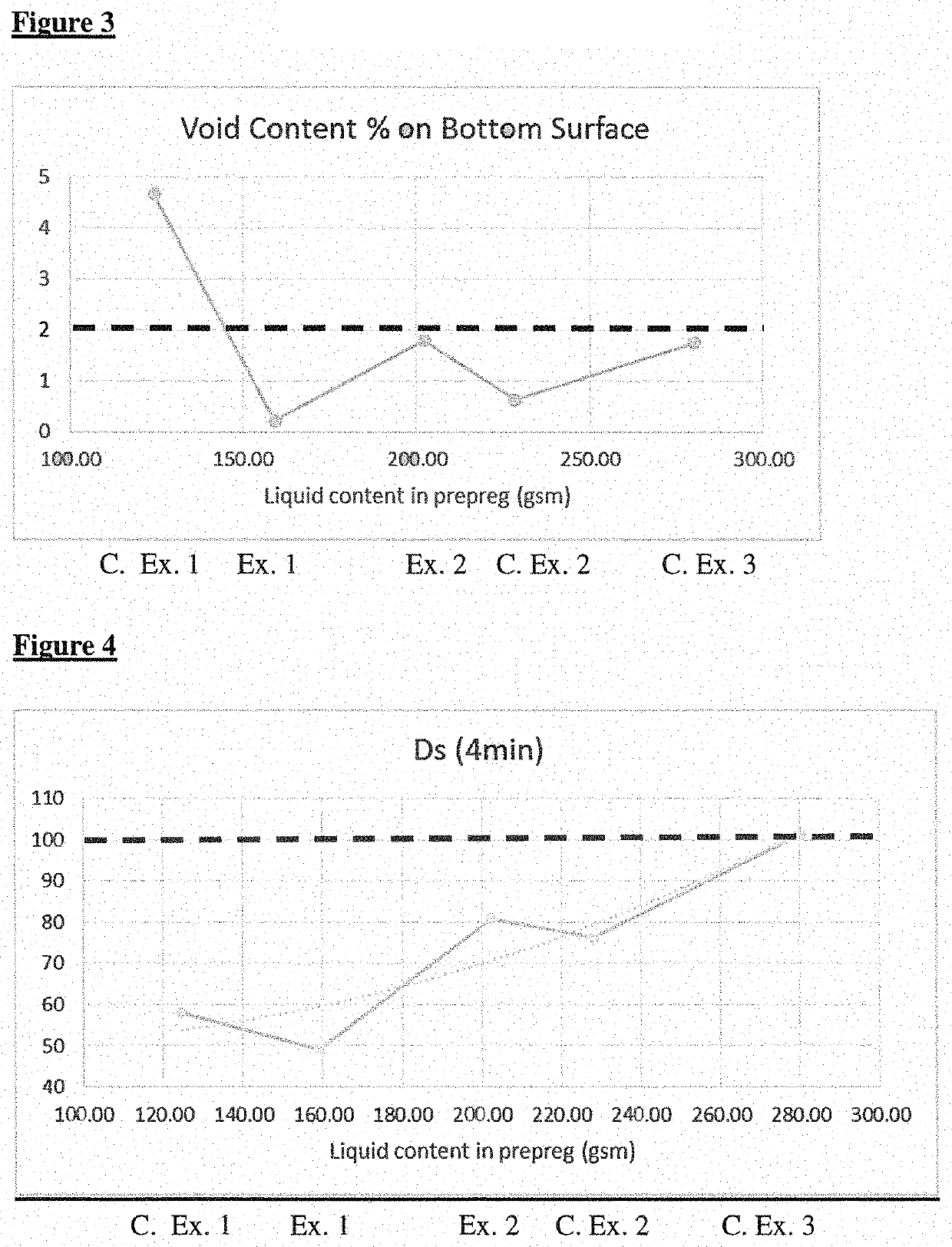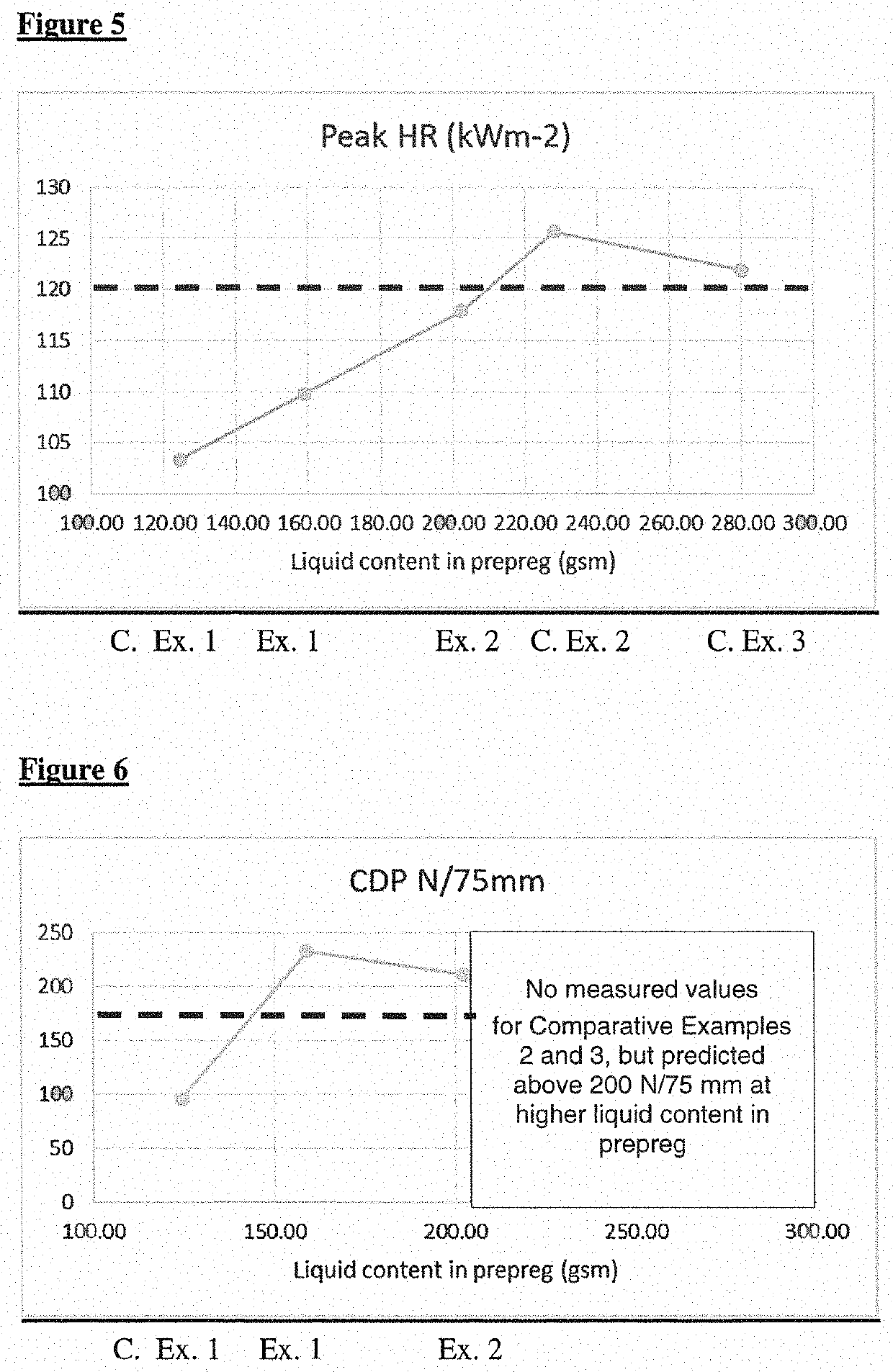Fire-retardant composite materials
a composite material and fire-retardant technology, applied in the field of fire-retardant composite materials, can solve the problems of reducing the mechanical properties of the laminate, requiring significant filling and fairing of the cured components at a substantial additional cost, and reducing the fire, smoke and toxic effects of the laminate, etc., to achieve good fire-retardant properties, good surface properties and aesthetics, and good mechanical properties
- Summary
- Abstract
- Description
- Claims
- Application Information
AI Technical Summary
Benefits of technology
Problems solved by technology
Method used
Image
Examples
example 1
[0114]A prepreg was formed comprising a single ply of woven glass fibre as a fibrous reinforcement and an epoxide resin matrix system of the present invention.
[0115]The epoxide resin matrix system comprised, as a first component, the combination of (i) an epoxide-containing resin and (ii) a catalyst for curing the an epoxide-containing resin of the present invention.
[0116]The epoxide resin matrix system further comprised, as a second component, fire retardant / non-flammable solid fillers. The fire retardant fillers comprised ammonium polyphosphate, melamine powder, and glass beads.
[0117]The epoxide resin matrix system comprised 52.34 wt % epoxide-containing resin, 9.91 wt % catalyst and 37.75 wt % fire retardant / non-flammable solid fillers, based on the total weight of the epoxide resin matrix system.
[0118]The total weight of the prepreg was 555 gsm, comprised of 300 gsm woven glass fibre and 255 gsm of the epoxide resin matrix system, which included the epoxide resin, the catalyst a...
example 2
[0134]Example 1 was repeated, using the same fabric, but the ratio of the first and second components of the epoxide resin matrix system was modified to provide that liquid content of the resin upon curing was increased to 202 gsm.
[0135]Again, the sandwich panel was tested to measure the void content on the bottom surface of the sandwich panel, the smoke density, the peak heat release, and the climbing drum peel strength, and the results are again shown in Table 2 and FIGS. 3 to 6.
[0136]The data shows that providing a liquid content in the prepreg upon curing of about 200 gsm again achieved a low void content, below the 2% desired maximum threshold, on the bottom surface of the sandwich panel. The measured void content was significantly lower than would be achieved is using a phenolic resin in the outer layer plies of the sandwich panel.
[0137]The data also showed that providing a liquid content in the prepreg upon curing of about 200 gsm achieved a higher smoke density, and peak hea...
PUM
| Property | Measurement | Unit |
|---|---|---|
| temperature | aaaaa | aaaaa |
| thickness | aaaaa | aaaaa |
| thicknesses | aaaaa | aaaaa |
Abstract
Description
Claims
Application Information
 Login to View More
Login to View More - R&D
- Intellectual Property
- Life Sciences
- Materials
- Tech Scout
- Unparalleled Data Quality
- Higher Quality Content
- 60% Fewer Hallucinations
Browse by: Latest US Patents, China's latest patents, Technical Efficacy Thesaurus, Application Domain, Technology Topic, Popular Technical Reports.
© 2025 PatSnap. All rights reserved.Legal|Privacy policy|Modern Slavery Act Transparency Statement|Sitemap|About US| Contact US: help@patsnap.com



